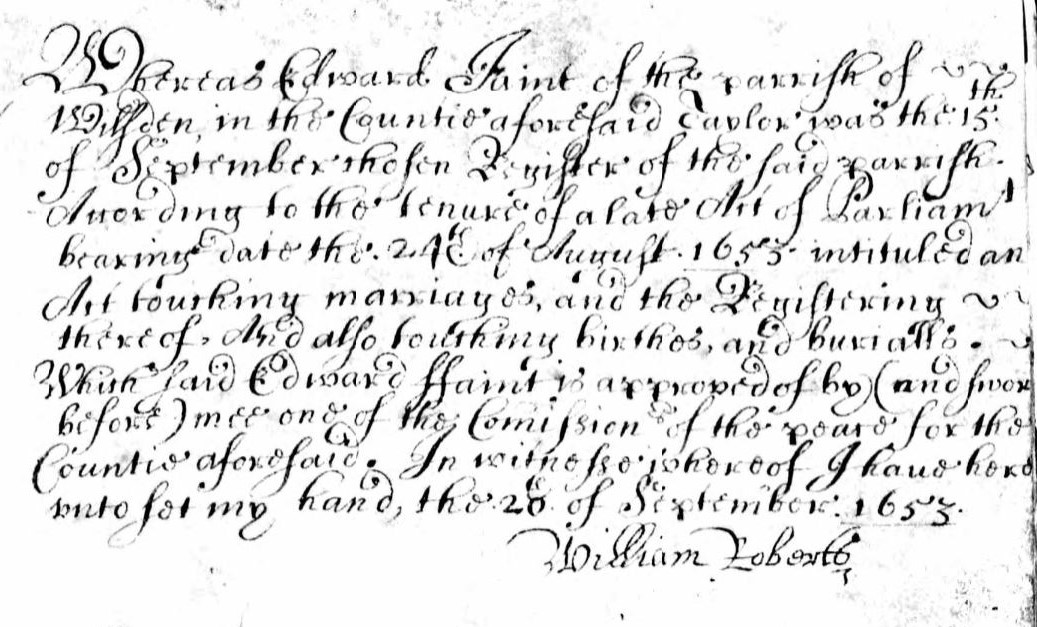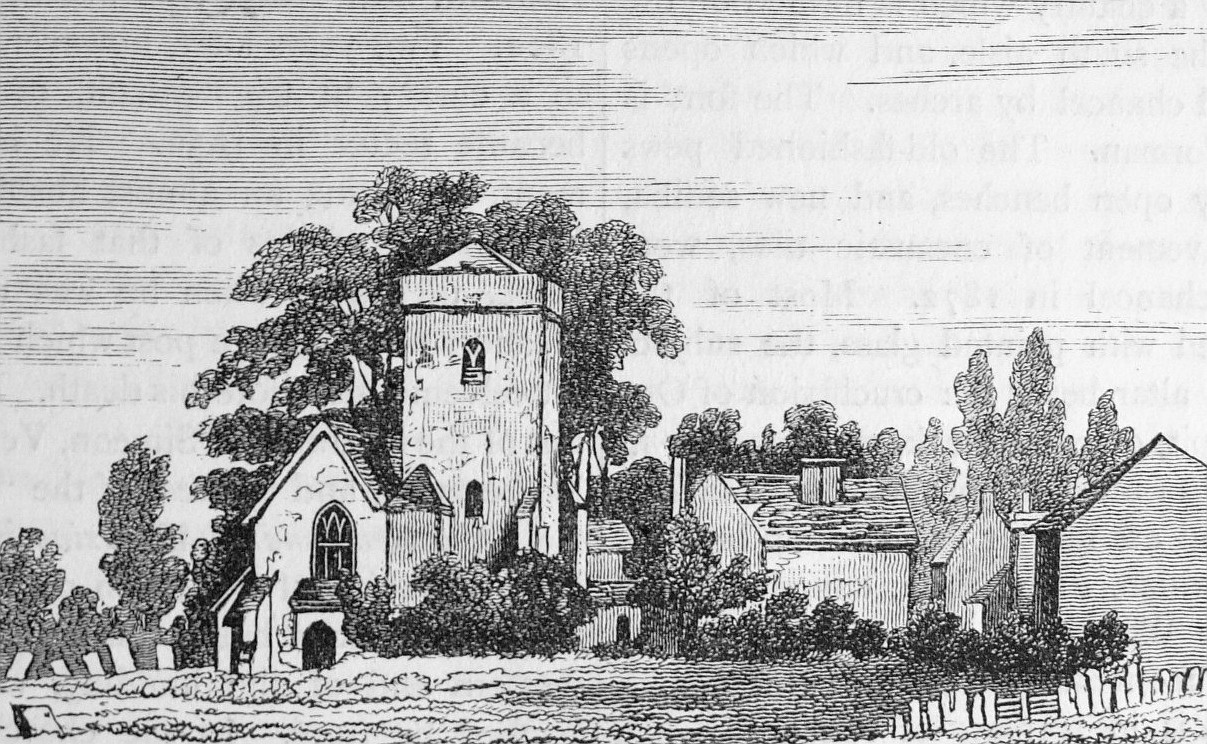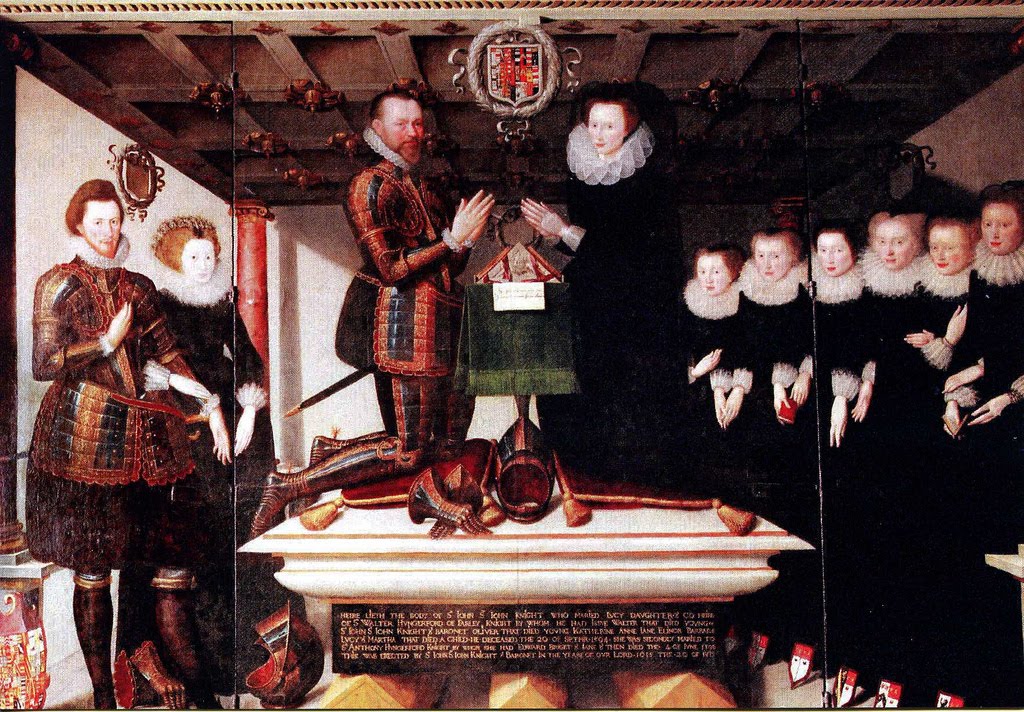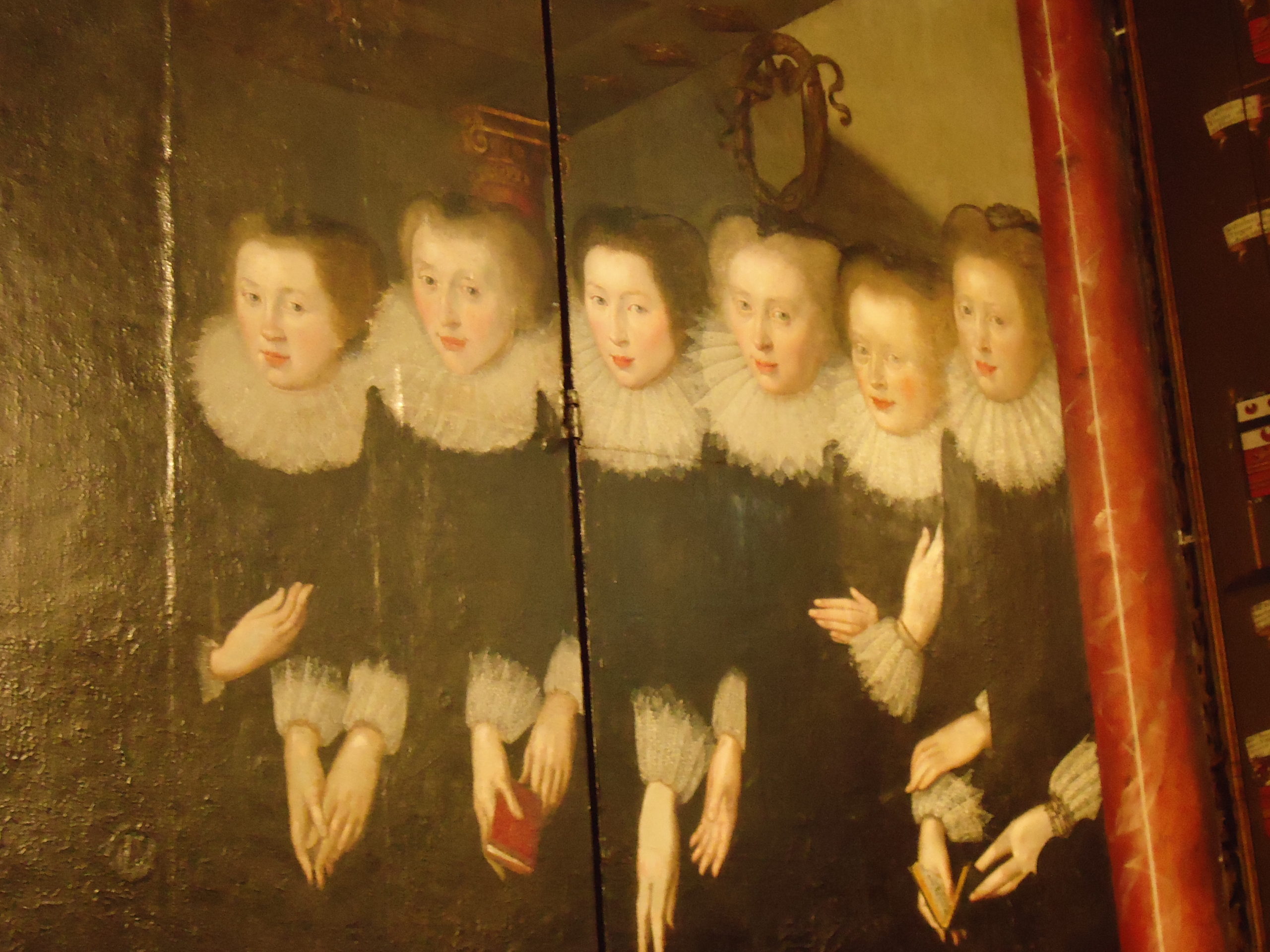

When war raged across England in the 17th century the St. John family, like so many others, were divided by the conflict. Sir John St. John 1st Baronet, lost three sons to the Royalist cause while his two younger boys fought on the Parliamentarian side. His sister Lucy St. John watched her son Allen Apsley join his Cavalier cousins in battle while her daughter Lucy supported her regicide husband John Hutchinson.*
And yet another of those sisters portrayed on the St. John polyptych had to reconcile her Royalist background with the sympathies of a Parliamentarian; William Roberts, a friend of Oliver Cromwell and her son in law.
When Jane’s husband Robert Atye died in 1612 he left his family well provided for. Following the death of his son Arthur his daughter Eleanor (spelling varies) became a wealthy heiress and a desirable marriage prospect.
Eleanor was about 16 years old when she married her near neighbour in Willesden, William Roberts in 1624, the year in which he was knighted by James I at Greenwich. The newly weds moved into Neasden House, the Roberts family home built by Thomas Roberts in the reign of Henry VIII. During William and Eleanor’s occupancy it became one of the largest houses in Willesden. It needed to be as the babies soon began to arrive, some sources say as many as 15.
A son, Edmund Roberts was baptised at St Mary’s, Willesden on July 23, 1625. After that they arrived at fairly regular intervals – William 1628, Mary 1629, John 1631, Jane 1634, Frances 1634/5, William 1637, Elizabeth 1639, Eleanor 1641, Edward (date of birth unknown). And during the Civil War Eleanor took three sons to St. Mary’s, Willesden to be baptised – Thomas on July 6, 1645, Francis on November 29, 1646 and Richard on April 9, 1648.
Sir William Roberts served on various commissions under Charles I but he soon revealed his Parliamentarian credentials. In 1644 he was appointed a Deputy Lieutenant for Middlesex and ordered to muster 300 trained men to suppress an uprising at Windsor.
Roberts was one of 135 nominated commissioners chosen to attend the trial of Charles I but it is unlikely he took an active role, unlike Lucy St. John’s son in law, John Hutchinson who was among those that signed the King’s death warrant.
A powerful character, Sir William dominated the parish of Willesden. He even conducted marriages at his house and took charge of the parish registers during the Interregnum, his signature frequently appearing within the pages.
Sir William’s post war career proved equally busy and very lucrative. He was first appointed as one of the contractors who arranged for the sale of episcopal land. By 1652 his role was extended to include the sale of crown and royalist land. Raised to the peerage in 1658, Lord Roberts took his seat in Cromwell’s ‘upper house.’
Following the restoration of the monarchy in 1660 Roberts managed to hang on to his wealth. He died on September 19, 1662 and was buried at St. Mary’s Church, Willesden.
So, as usual plenty of information can be found about Sir William, but what about Eleanor. Yes, it’s the same old story – I can’t even find a will as yet, although I’m convinced she must have left one.
Soon after her husband’s death Eleanor and her eldest son Sir William Roberts 1st Baronet ended up in a battle in the Court of Chancery. William challenged his mother’s right to sell 120 acres of land in Willesden and Hendon to Edward Nelthorpe. She meanwhile counter claimed that William was treating as his own land in Willesden, Kilburn and Hampstead that should have gone to a younger son, Edward.
There is one other intriguing reference to Eleanor. In an attempt to calm the religious turmoil that continued following the Restoration, Charles II issued the Royal Declaration of Indulgence in 1672. This was an attempt to allow greater religious freedom for Catholics and non-conformists. Lady Eleanor Roberts of Willesden is recorded as requesting a licence for a non-conformist minister to serve at St. Mary’s, Willesden.
Eleanor died in 1678 and was buried at St. Mary’s, Willesden on November 22.
*And if you find the St. John family and the 17th century fascinating (and quite frankly, who wouldn’t) then you are sure to enjoy the Lydiard Chronicles, a series of three historical novels by Elizabeth St. John – The Lady of the Tower, By Love Divided and Written in their Stars, with the companion Counterpoint series, Theo, Earl of Suffolk, Barbara, Lady Villiers and Henry, the King’s Cavalier.


Novels by Elizabeth St. John

Entry of a marriage ‘approved’ by William Roberts in 1653.

 The St. John polyptych
The St. John polyptych
 Eleanor’s mother Jane St. John, third from right.
Eleanor’s mother Jane St. John, third from right.